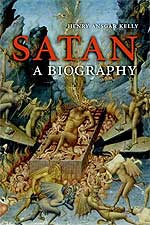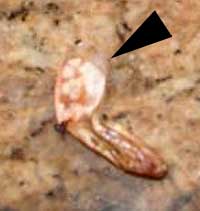The New York Times has an article (based on a BAR article) that challenges the connection between the Dead Sea Scrolls and the Qumran settlement entitled, “Archaeologists Challenge Link Between Dead Sea Scrolls and Ancient Sect.” Chris Weimer has also posted on this news article over at Thoughts on Antiquity, as has Jim Davila at PaleoJudaica; I thought I’d throw in my two cents worth as well.
Here is an excerpt from the article:
But two Israeli archaeologists who have excavated the site on and off for more than 10 years now assert that Qumran had nothing to do with the Essenes or a monastery or the scrolls. It had been a pottery factory.
The archaeologists, Yizhak Magen and Yuval Peleg of the Israel Antiquities Authority, reported in a book and a related magazine article that their extensive excavations turned up pottery kilns, whole vessels, production rejects and thousands of clay fragments. Derelict water reservoirs held thick deposits of fine potters’ clay.
Dr. Magen and Dr. Peleg said that, indeed, the elaborate water system at Qumran appeared to be designed to bring the clay-laced water into the site for the purposes of the pottery industry. No other site in the region has been found to have such a water system.
By the time the Romans destroyed Qumran in A.D. 68 in the Jewish revolt, the archaeologists concluded, the settlement had been a center of the pottery industry for at least a century. Before that, the site apparently was an outpost in a chain of fortresses along the Israelites’ eastern frontier.
While it is difficult to assess the strengths of their arguments based on a newspaper article, I’m not quite sure how finding significant pottery fabricating remains leads to the conclusion that the scrolls are not related to the site as well — especially considering that Magen himself thinks that the pottery associated with the scrolls came from Qumran.
The article’s conclusion is also a bit overstated:
Despite the rising tide of revisionist thinking, other scholars of the Dead Sea scrolls continue to defend the Essene hypothesis, though with some modifications and diminishing conviction.
If you want to read further, you can check out the BAR article here (subscription required to read the full article) or read Magen and Peleg’s more detailed essay in The Site of the Dead Sea Scrolls: Archaeological Interpretations and Debates, edited by Katharina Galor, Jean-baptiste Humbert, and Jürgen Zangenberg (Studies on the Texts of the Desert of Judah 57; Brill, 2006; Buy from Amazon.ca | Buy from Amazon.com).
For more reseources on the Dead Sea Scrolls, you may want to check out my resource pages.


 Perhaps my title is a bit misleading… this post is not about how tall Jesus may have been (though if you are interested, he probably would have been just under five feet). Rather, it is about another Jesus sighting… this time on a shrimp. That’s right… Jesus’ face has been discovered on a shrimp. See the whole story
Perhaps my title is a bit misleading… this post is not about how tall Jesus may have been (though if you are interested, he probably would have been just under five feet). Rather, it is about another Jesus sighting… this time on a shrimp. That’s right… Jesus’ face has been discovered on a shrimp. See the whole story